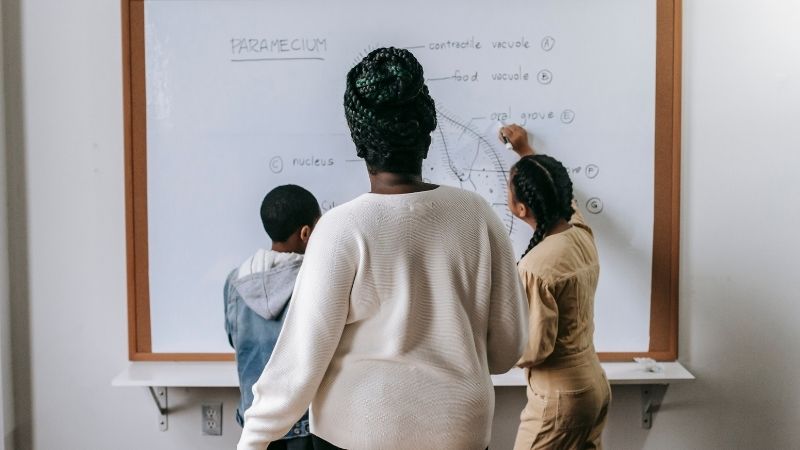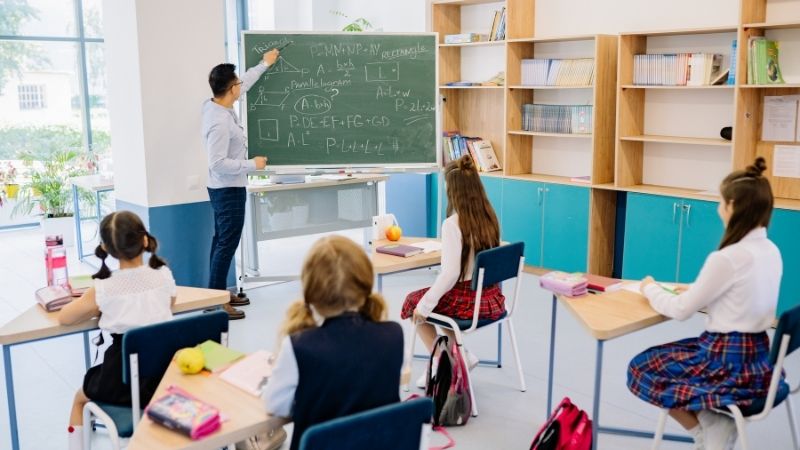
In the realm of special education, the concept of inclusion has gained significant attention and interest. This article aims to explore the benefits and challenges associated with incorporating inclusive practices in special education extensively.
By delving into effective classroom strategies and co-teaching methods, as well as sharing impactful experiences of students, this article seeks to provide a comprehensive understanding of the importance and potential outcomes of inclusion in special education contexts.
Additionally, it will discuss ways to promote collaboration, support, and create a positive learning environment within inclusive classrooms.
Key Takeaways
- Inclusive practices in special education foster social integration and a sense of belonging among all students, promoting empathy and understanding among classmates.
- Limited resources and funding, as well as resistance from staff and parents, can hinder support and accommodations for students with diverse needs in inclusive education.
- Effective classroom strategies for inclusive education include implementing evidence-based instructional approaches, tailoring lessons to meet individual needs, and using visual aids and technology-based tools.
- Co-teaching methods involving joint instruction of general education and special education teachers can enhance the learning experience for all students, foster personalized learning experiences, and create a supportive and inclusive environment.
The Benefits of Inclusive Practices in Special Education
Inclusive practices in special education have been shown to provide numerous benefits for both students with disabilities and their typically developing peers. By fostering social integration, inclusive classrooms promote a sense of belonging and acceptance among all students. This integration allows students with disabilities to develop meaningful relationships and learn from their typically developing peers, while also promoting empathy and understanding among classmates.
Furthermore, inclusive practices support academic growth by providing individualized instruction that meets the diverse needs of all learners. Teachers can employ various strategies such as differentiated instruction, peer tutoring, and cooperative learning to ensure that all students receive appropriate educational opportunities.
Research has consistently demonstrated that inclusive practices not only benefit students with disabilities but also enhance the overall classroom experience for all learners involved.
The Challenges of Incorporating Inclusive Practices in Special Education
The implementation of inclusive practices in special education settings presents a set of difficulties that need to be addressed. Overcoming these barriers is crucial in order to create an inclusive curriculum that benefits all students. Some of the challenges that educators face include:

Lack of resources and funding: Limited resources can hinder the ability to provide appropriate support and accommodations for students with diverse needs.
Resistance from staff and parents: Some individuals may be resistant to change or have misconceptions about inclusive education, making it challenging to gain their support.
Varying levels of student readiness: Students may enter the classroom with different skill levels and require individualized instruction, which can be difficult to manage within a standard curriculum.
Addressing social integration: Ensuring meaningful interactions between students with disabilities and their peers requires proactive efforts from educators.
Despite these challenges, adopting effective classroom strategies, such as co-teaching methods and personalized learning plans, can help overcome barriers and promote successful inclusion in special education settings.
Effective Classroom Strategies for Inclusive Education
Implementing evidence-based instructional approaches and collaborative teaching methods can facilitate the successful integration of students with diverse needs in educational settings.
Collaborative learning, where students work together in small groups to solve problems or complete tasks, promotes social interaction and supports the development of communication and teamwork skills. This approach encourages peer support and allows for differentiated instruction, where teachers tailor their lessons to meet the individual needs of each student.

By using varied instructional strategies, such as visual aids, hands-on activities, or technology-based tools, educators can engage all learners effectively. Differentiated instruction recognizes that students have different learning styles, abilities, and interests. It offers multiple pathways for student success while promoting inclusivity in the classroom.
Co-Teaching Methods for Successful Inclusion in Special Education
Collaborative teaching methods that involve the joint instruction of general education and special education teachers can promote successful inclusion of students with diverse needs in educational settings. These co-teaching methods, when implemented effectively, can enhance the learning experience for all students by providing a supportive and inclusive environment. To achieve this, collaborative teaching employs differentiated instruction strategies that cater to the individual needs of each student. This approach allows for personalized learning experiences that address the unique challenges and strengths of every learner. By incorporating collaborative teaching and differentiated instruction, educators create an atmosphere where all students feel valued, engaged, and empowered in their educational journey.
Such inclusive practices have a profound impact on the experiences of students in inclusive classrooms. These classrooms provide opportunities for peer interaction, social integration, and mutual support among students with diverse abilities. The subsequent section will delve deeper into these impactful experiences of students in inclusive classrooms.
Impactful Experiences of Students in Inclusive Classrooms
Peer interaction and social integration are key components of inclusive classrooms, fostering an environment that promotes mutual support among students with diverse abilities. Inclusive education not only provides academic benefits but also allows for personal growth and social interaction.
Students in inclusive classrooms have the opportunity to develop empathy, understanding, and acceptance towards their peers with different abilities. Through collaboration and cooperation, they learn to appreciate diversity and value individual strengths.
Social interactions in inclusive classrooms can boost self-esteem, enhance communication skills, and promote a sense of belonging among students. Moreover, these experiences provide opportunities for students with disabilities to develop friendships and establish meaningful connections with their peers.
To foster a supportive and inclusive environment in education, it is essential to create opportunities for students with diverse abilities to collaborate and receive support from their peers. Collaborative learning and peer support can greatly benefit all students, including those with special needs.

Here are some key ways in which collaborative learning and peer support can enhance the educational experience:
- Increased engagement: Working together allows students to actively participate in their own learning process.
- Enhanced social skills: Interacting with peers promotes the development of important social skills, such as communication and cooperation.
- Improved self-esteem: Students feel valued when they contribute positively to group activities, boosting their self-confidence.
- Strengthened academic outcomes: Peer support can lead to better understanding of concepts through explanations and discussions.
Creating a Positive and Inclusive Learning Environment in Special Education
This discussion will focus on the importance of inclusion, building a supportive community, and promoting equal opportunities in special education.
Inclusion is crucial as it ensures that all students have access to quality education regardless of their abilities or disabilities.
Building a supportive community involves creating an environment where students feel valued, respected, and included, fostering their overall development.
Lastly, promoting equal opportunities aims to provide every student with the necessary resources and support to reach their full potential academically and socially.
Importance of Inclusion
The significance of inclusion in special education lies in its potential to create a more equitable and supportive learning environment for all students, including those with disabilities. Inclusion offers numerous benefits and presents various challenges that educators must navigate.
Benefits of inclusion in special education include:

- Increased academic achievement: Inclusive classrooms provide diverse instructional strategies tailored to individual needs, leading to improved learning outcomes.
- Enhanced social skills: Students with disabilities benefit from interacting with their peers without disabilities, fostering positive relationships and promoting social development.
- Improved self-esteem: Being included in general education settings helps students with disabilities develop a sense of belonging and boosts their confidence.
- Preparation for real-world settings: Inclusive environments expose students to the diversity they will encounter outside school, better equipping them for future success.
Challenges associated with inclusion include:
- Meeting diverse needs: Addressing the varied abilities and learning styles within an inclusive classroom requires careful planning and differentiation.
- Ongoing professional development: Effective implementation of inclusive practices necessitates ongoing training for teachers to support diverse learners effectively.
- Managing behavior: Supporting students with challenging behaviors can be demanding, requiring proactive strategies such as positive behavioral interventions and supports (PBIS).
- Ensuring access to resources: Providing appropriate accommodations, assistive technology, and specialized materials may require additional funding and logistical considerations.
Understanding these benefits and challenges is crucial for educators aiming to create successful inclusive environments that promote the well-being of all students.
Building a supportive community in the context of inclusive education involves fostering positive relationships and promoting social development among students with and without disabilities.
Developing supportive relationships is crucial in creating an environment where all students feel valued, respected, and included. These relationships can help foster a sense of belonging for students with disabilities, which is essential for their overall well-being and academic success.
Teachers can facilitate this by implementing strategies such as cooperative learning activities, peer mentoring programs, and inclusive classroom practices that encourage collaboration and understanding among students.
By actively promoting social interactions and providing opportunities for meaningful connections, educators can create a positive classroom climate that supports the development of strong supportive relationships between students with disabilities and their peers.
This inclusive approach fosters a sense of belonging for all learners and contributes to the creation of an inclusive educational community.

Promoting equal opportunities in the context of inclusive education requires a comprehensive framework that addresses barriers and ensures equitable access to resources, supports, and educational experiences for all students. In order to create a supportive community that fosters equal opportunities, it is essential to consider the following:
Collaboration: Encouraging collaboration among students, teachers, parents, and administrators promotes a sense of belonging and shared responsibility.
Differentiated Instruction: Tailoring instruction to meet individual needs allows for diverse learners to engage with content at their own pace and level.
Universal Design for Learning (UDL): Implementing UDL principles ensures that materials and activities are accessible to all students, regardless of their abilities or learning styles.
Social-emotional support: Providing social-emotional support through counseling services or peer mentoring programs helps create an inclusive environment where all students feel valued.
Frequently Asked Questions
How Can Parents Advocate for Inclusive Practices in Special Education?
Parent advocacy is crucial for supporting inclusive practices in special education. Parents can advocate by attending IEP meetings, collaborating with teachers and administrators, seeking resources, and joining support groups to ensure their child's needs are met in an inclusive classroom environment.
What Are Some Common Misconceptions About Inclusive Education in Special Education?
Misconceptions about inclusive education in special education can hinder parent advocacy. It is important to address these misconceptions, provide resources, and promote a knowledgeable and empathetic understanding of the benefits and challenges of inclusive practices, effective classroom strategies, co-teaching methods, and impactful student experiences.

What Resources Are Available to Support Teachers in Implementing Inclusive Practices?
Teacher training is crucial in implementing inclusive practices in special education. Resources such as professional development programs and workshops provide educators with the necessary knowledge and skills. Community partnerships also play a significant role in supporting teachers by offering additional resources and support.
How Can Schools Ensure That Students With Disabilities Receive Appropriate Accommodations and Support in Inclusive Classrooms?
Schools can ensure appropriate accommodations and support for students with disabilities in inclusive classrooms by creating a supportive environment and providing individualized instruction. This promotes equal opportunities for learning, fosters inclusion, and maximizes student success.
What Are Some Strategies for Addressing the Individual Needs of Students With Disabilities in Inclusive Classrooms?
One interesting statistic is that 85% of students with disabilities are educated in general education classrooms. To address individual needs, teachers can use differentiation strategies and assistive technology to provide appropriate accommodations and support.
 Careers in EducationElementary EducationHigh School EducationEducational TechnologyTeaching StrategiesSpecial EducationPrivacy PolicyTerms And Conditions
Careers in EducationElementary EducationHigh School EducationEducational TechnologyTeaching StrategiesSpecial EducationPrivacy PolicyTerms And Conditions
